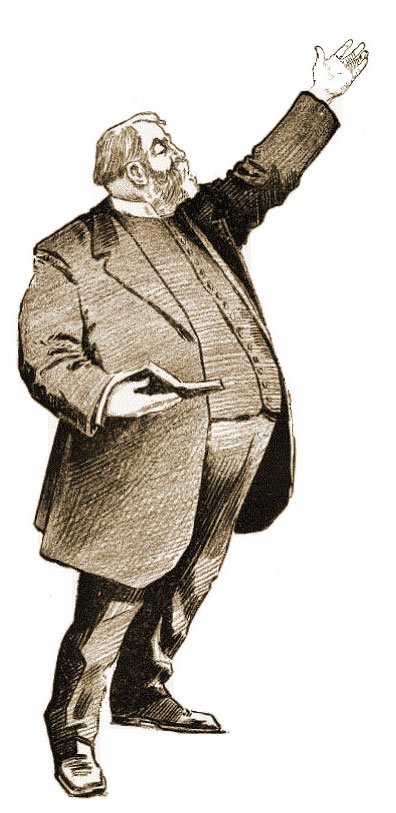The Fifth Great Awakening

D. L. Moody preaching
It would be very easy to view this period, 1880 to 1903, as a period of unusual evangelistic effort and success, as most of its documentation surrounds the ministry of Dwight L. Moody, together with a host of other ministries that were also born out of the 1857 revival.
Orr regards this period also as a ‘resurgence.’ Certainly, the fourth great awakening had produced some highly motivated and anointed ministries, but looking at the world situation, something more than evangelistic success was afoot. It was quite distinct in its character and effectiveness.
Why we regard it as a Fifth Great Awakening
It initially centred around the ministry of D L Moody, whose ministry may be described as “highly successful crusade evangelism interspersed with periodic revivalism”. Moody began his ministry in Chicago and entered full-time Christian work in 1860, concentrating on his Sunday school and YMCA work. He was God’s chosen vessel to take the sparks of the 1857-60 revival to ignite a fresh passion for God and for souls around the world.
Moody traveled, with his singing evangelist companion, Ira Sankey, to England a number of times. Spurgeon spoke of the visit of 1873-1875 as “a gracious visitation” and a “very notable ingathering of converts”, especially at Newcastle and Edinburgh. Andrew Bonar, too, refers, in his diary to “the tide of real revival in Edinburgh” comparing it with his own experience of revival 35 years earlier.
Similar results followed Moody and Sankey as they traversed England, Ireland and Scotland, filling the largest halls in the land. Moody returned to England in 1881-83 and had an astounding affect on a new breed of evangelists in the U.S., Britain and across the world. His mission in Cambridge, in 1882, marked the beginning of a worldwide interdenominational student missionary movement.
Though the YMCA in the States and Christian Unions in the U.K. had their inception during the former revival (1857), Moody’s influence transformed these works into powerful missionary movements. The ‘Cambridge Seven’, including C. T. Studd, were products of Moody’s visit and they went to on evangelise China in 1885.
By 1912 Studd founded W.E.C., a missionary movement which had great success in parts of Africa. Wilfred Grenfell, the renowned missionary to Labrador was converted at a tent mission led by Moody in 1885. Similar results occurred in the US.
Thousands of young men volunteered for missionary work and the Anglo-American impetus spread around the world, producing the world’s Student Christian Federation, which, in turn, provided a large proportion of the outstanding Christian leaders of the early 20th Century. Moody founded the Moody Bible Institute in 1883, with an emphasis on missions.
The Christian and Missionary Alliance was formed during this time by A. B. Simpson and the Christian Endeavour Movement was born out of a revival in Portland, Maine, in 1880-1881. Other evangelists, spurred on by Moody, threw themselves into the harvest. Sam Jones, J. Wilber Chapman and Billy Sunday had extraordinary success in North America.
Andrew Murray exercised a powerful ministry in South Africa, as did John McNeil in Australia. Revival hit Japan in the early 1880’s, increasing the adult membership from 4,000 to 30,000 in five years. The China Inland Mission experienced a large influx of new missionaries.
We must also consider the amazing ministry of Maria Woodworth-Etter, an early pioneer of Pentecostal ministry whose evangelistic and healing campaigns were conducted throughout the American nation. Her reputation grew, leading her to purchase an 8,000-seat tent in which to conduct her services. In 1912 she joined the young Pentecostal movement and preached widely in Pentecostal circles until her death in 1924.
New missions were planted in many unevangelised fields and revivals were reported in India, Africa, South Africa, Madagascar, Australia, Central and South America. We may well describe this resurgence “a missionary revival” which took the flame of the 1859 revival even further around the world, ensuring a strong church base in all nations – just in time for the great 20th Century awakening.
For further research:
D. L. Moody Wikipedia
Moody’s Story
D. L. Moody Britannica



